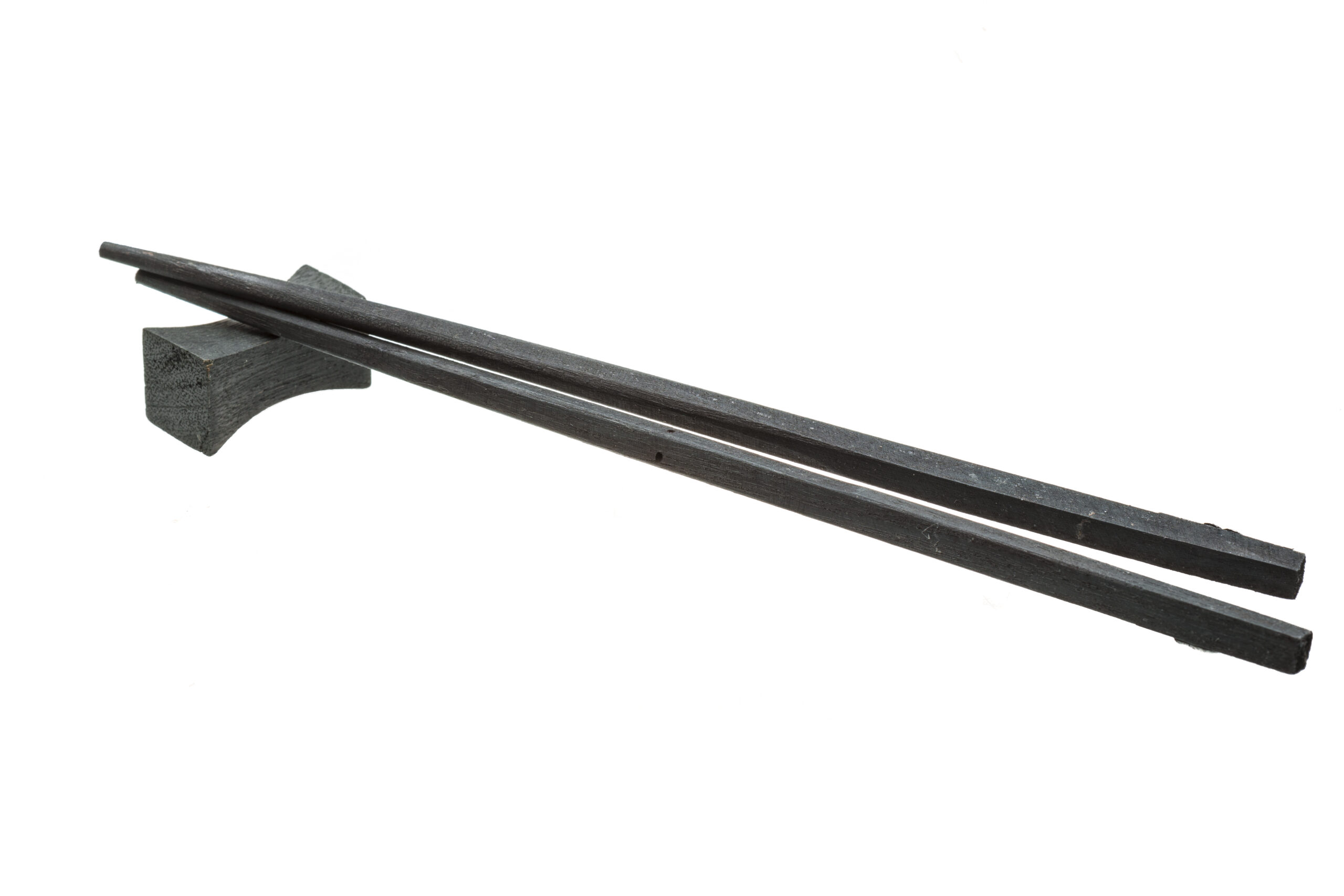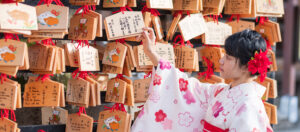Mastering the art of using Japanese chopsticks is not just about the ability to pick up food; it’s a journey through culture, etiquette, and culinary appreciation. For many, chopsticks symbolize a connection to Japan’s rich heritage and nuanced dining experiences. This article serves as a comprehensive guide to help you navigate the intricacies of using chopsticks proficiently and respectfully, making your dining endeavors all the more enjoyable.
Understanding the Cultural Significance of Chopsticks
Chopsticks have transcended their function as mere eating utensils and are deeply embedded in Japanese culture. Originating from ancient China, they were introduced to Japan around the 6th century. Today, chopsticks symbolize a culinary art form that reflects harmony, balance, and precision in food preparation and consumption. In Japan, the act of using chopsticks is an aesthetic experience that emphasizes mindfulness and respect for the meal.
The design of chopsticks also carries cultural significance. Traditionally made from wood, bamboo, or lacquered materials, they are often beautifully crafted, showcasing intricate designs and finishes. In many Japanese households, chopsticks are personalized, with each family member using their own set, reflecting individuality and familial ties. The choice of chopsticks can also communicate social status and personal taste.
Chopsticks play a vital role in Japanese ceremonies and rituals, including weddings and tea ceremonies. They often serve as symbols of longevity and good fortune. Knowing the cultural background enriches your understanding of their use, making each dining experience a deeper connection to the culture.
Moreover, the way chopsticks are used can reflect social customs and etiquette. For instance, using chopsticks to pass food directly from one person to another is frowned upon, as it mirrors a funeral ritual. This awareness of cultural nuance adds layers of meaning to the seemingly simple act of eating.
Understanding this context enhances your appreciation for the tools you wield during meals. It encourages a respectful approach to dining, transforming a basic necessity into an art form that connects you with centuries of tradition.
Ultimately, grasping the cultural significance of chopsticks is the first step in mastering their use. As you familiarize yourself with this vital aspect of Japanese cuisine, you’ll find that chopsticks are more than just utensils; they are a gateway to understanding and appreciating a remarkable culture.
Choosing the Right Type of Chopsticks for You
The journey to mastering chopstick use begins with selecting the right pair. Chopsticks come in various materials, lengths, and designs, each suited to different preferences and needs. For beginners, bamboo or wooden chopsticks are often recommended due to their lightweight nature and textured surface, which provides a better grip.
When choosing chopsticks, consider their length and thickness. Standard chopsticks are typically 23 to 25 centimeters long. However, the ideal size depends on the user’s hand size and comfort. Shorter chopsticks may be easier for children or individuals with smaller hands, while longer ones can be more comfortable for larger hands.
Additionally, the tips of chopsticks can vary from pointed to blunt. Pointed tips are great for picking up delicate foods, like sushi, while blunter tips can be more effective for foods like rice or noodles. It’s worth experimenting with different types to find the ones that feel most comfortable and effective for you.
Color and design are also important considerations. Many chopsticks feature intricate patterns and colors, which are pleasing to the eye and can also signify personal style. However, those who seek a minimalist aesthetic might prefer simple, unadorned options.
For novice users, it’s wise to avoid chopsticks made of slippery materials such as plastic or metal, as these can complicate the learning process. Instead, focus on natural materials that allow for better control.
Finally, investing in a few different sets can enhance your dining experience. Having specialized chopsticks for various occasions—such as formal gatherings versus casual meals—allows you to seamlessly integrate this culinary art into your lifestyle while also expressing your personal taste.
Essential Techniques for Holding Chopsticks Correctly
The fundamental skill in using chopsticks is mastering the grip. Begin by holding one chopstick firmly between the base of your thumb and the tip of your index finger. This chopstick will remain stationary and act as a fulcrum. The second chopstick should be held like a pencil, resting against your middle finger and being controlled by your thumb and index finger.
It’s essential to ensure that the two chopsticks are aligned properly. They should not cross or overlap, as this will hamper your ability to pick up food efficiently. Practice sliding the top chopstick up and down using your fingers while keeping the bottom chopstick steady. This movement mimics the pinching action required for grasping food.
Keep your thumb relaxed yet engaged, as it plays a critical role in controlling the motion of the chopsticks. Your grip should be firm enough to maintain control but loose enough to allow for flexibility. This balance of tension will enable you to pick up a variety of foods with ease.
Your hand’s positioning is equally important. Try to keep your wrist relaxed and your elbow slightly bent. Avoid raising your elbows too high, as this can lead to discomfort and limit your range of motion. Instead, keep your arms close to your body, allowing for fluid movements.
As you gain confidence in your grip, experiment with different foods. Start with easy-to-grasp items, such as large pieces of vegetables or sushi rolls. Gradually move on to smaller or slippery foods, such as rice or noodles. This gradual progression will help solidify your technique without overwhelming you.
Lastly, consistency is key. Like any skill, practice is essential. Regularly using your chopsticks will help reinforce muscle memory and improve your dexterity, making the dining experience more enjoyable and less frustrating.
Navigating Common Mistakes When Using Chopsticks
Despite their simplicity, many people make common mistakes when using chopsticks, which can lead to frustration. One prevalent error is gripping the chopsticks too tightly. A tight grip can hinder movement and make it difficult to pick up food. Instead, maintain a relaxed hold that allows for fluid motion and adaptability.
Another frequent mistake is using chopsticks inappropriately, such as stabbing food instead of pinching it. This technique not only appears impolite in Japanese culture but also makes it difficult to pick up certain foods. Remember, chopsticks are designed for grasping, not piercing. Practicing the pinching motion will improve your ability to handle food gracefully.
Many newcomers also struggle with the alignment of the chopsticks. Misalignment can lead to dropped food and unnecessary frustration. Ensure that both chopsticks are parallel and that the tips are aligned. Regularly check your alignment as you practice to build a more intuitive sense of positioning.
Moreover, beginners often lift chopsticks too high when bringing food to their mouths. This extra movement can cause food to slip or fall, leading to an awkward dining experience. Instead, keep the food close to your bowl or plate, minimizing the distance for a more controlled and effective approach.
Another common error is being overly self-conscious while eating. Many individuals feel a pressure to perform perfectly, which can lead to anxiety and mistakes. Instead, focus on enjoying the meal and the process of using chopsticks. With practice, you’ll become more comfortable and proficient, which will naturally reduce anxiety.
Finally, don’t hesitate to seek guidance or observe others. Watching experienced chopsticks users can provide valuable insights into techniques and etiquette that books or videos may not convey. Embracing a learning attitude will help you navigate these common errors and enhance your overall dining experience.
The Importance of Proper Chopstick Etiquette
Understanding chopstick etiquette is crucial when dining in Japan. Proper use of chopsticks reflects respect for the culture and the meal. One of the most important rules is to avoid sticking chopsticks upright in a bowl of rice, as this resembles a funeral ritual. Instead, rest your chopsticks on a holder or across the bowl when not in use.
Passing food directly from one set of chopsticks to another is also considered inappropriate. This act mirrors a funeral tradition and can be seen as a bad omen. Instead, if you wish to share food, place it on a shared plate or dish for others to take. This practice demonstrates consideration and respect for your dining companions.
It’s crucial to avoid using chopsticks to point at people or objects. This behavior can be perceived as rude and disrespectful. Instead, if you need to indicate something, use your hand or another appropriate gesture. Maintaining a sense of decorum while using chopsticks enhances the overall dining experience.
When picking up food, do so in a quiet and controlled manner. Making excessive noise—like clattering chopsticks or dropping food—can be viewed as poor etiquette. Practice your technique to develop a quiet and confident grip, allowing for a more pleasant atmosphere during meals.
Furthermore, avoid playing with your chopsticks or using them to dig through food. This behavior can come off as immature and disrespectful. Focus on your meal and interact with those around you rather than fidgeting with your utensils.
Lastly, it’s essential to observe and adapt to the etiquette of your dining companions. Different regions may have unique customs or variations in chopstick use. Being attentive to these nuances allows you to navigate cultural differences smoothly and demonstrates a willingness to engage with the customs of others.
Tips for Picking Up Different Types of Food Easily
Picking up food with chopsticks can vary significantly depending on the item itself. Soft items like tofu or steamed vegetables may require a gentle touch; practice using slow, deliberate movements to prevent squishing or breaking them. A steady grip is essential for maintaining control while lifting these items to your mouth.
For slippery foods like sashimi or sushi rolls, try to focus on pinching with the tips of your chopsticks. Allow the tips to grip the food firmly while keeping the bottom chopstick steady. If you find this challenging, consider placing a small amount of wasabi or dipping sauce on the side to help you practice your technique with additional tactile feedback.
Noodles can be tricky, as they tend to slip and slide. A helpful technique is to gather a small portion of noodles by wrapping them around one chopstick while pinching them with the other. This method allows for better control and reduces the chance of losing your grip. Practice this technique with different types of noodles to build your confidence.
When it comes to rice, dry rice can be picked up easily, but sticky rice requires a different approach. Utilize a scooping motion to embrace the rice gently, rather than trying to stab or pinch it. With practice, you’ll find that sticky rice can be picked up efficiently, minimizing the mess.
For larger pieces of food, like chicken wings or tempura, it may be helpful to use both chopsticks like a set of tongs. This technique allows you to control larger items while maintaining balance. Focus on the stability of your grip as you lift, ensuring you’re not applying too much pressure that may cause the food to slip.
Lastly, don’t hesitate to use your hands when appropriate. In some situations, particularly with casual dining or when eating certain types of dishes, using your fingers can be acceptable. Developing your chopstick skills while knowing when it’s appropriate to switch to your hands can enhance your overall dining experience.
How to Practice Using Chopsticks Effectively
The key to mastering chopsticks lies in consistent practice. Setting aside dedicated time for practice sessions can accelerate your learning. Start with simple exercises, such as picking up small objects like grains of rice or candy. This approach allows you to focus on your grip and technique without the distraction of an actual meal.
Integrating chopsticks into your daily activities can also help reinforce your skills. Consider using them for casual meals or even during snack time. By making chopsticks a normal part of your dining experience, you’ll enhance your comfort and familiarity over time.
Another effective practice method involves using chopsticks to interact with items that vary in texture and weight. Challenge yourself with both soft items like steamed vegetables and hard items like nuts or grapes. This variety forces you to adapt your technique and enhances your versatility with chopsticks.
Engaging in games or challenges can also be a fun way to practice. For instance, you can create a “chopstick relay” where you transfer small items from one bowl to another within a time limit. This game not only hones your skills but also adds an element of competition and enjoyment.
Additionally, consider watching instructional videos or tutorials. Many resources showcase various techniques, tips, and tricks to refine your skills. Learning from others can provide you with new insights and methods that can make your practice more effective.
Finally, keep track of your progress. Set goals for yourself—like mastering a specific type of food or technique—and celebrate your successes along the way. This approach adds motivation to your practice and helps you appreciate how far you’ve come while mastering the art of using chopsticks.
Exploring Regional Variations in Chopstick Use
While chopsticks are widely recognized as a staple in Japanese dining, their use varies significantly across different regions in Japan and throughout Asia. In Japan, the standard chopsticks are generally made from wood, bamboo, or lacquer. However, in contrast, Chinese chopsticks are often longer and can be made from a variety of materials, including metal and plastic.
In some regions of Japan, such as Okinawa, traditional chopstick designs are unique, often featuring colorful patterns or intricate carvings. Understanding these variations not only enriches your knowledge of chopsticks but also enhances your appreciation for Japanese culture and its diversity.
The techniques for using chopsticks can also differ by region. For instance, in China, it’s common to use chopsticks to serve food from communal dishes directly onto your plate, while this practice may be less common in Japan, where shared dishes are often passed along without using chopsticks. Knowing these distinctions can enhance your dining experience and provide insights into local customs.
Moreover, some cultures incorporate various types of chopsticks for different foods or occasions. In Korea, metal chopsticks are preferred, and they are typically flat instead of round. This design influences the way food is picked up and consumed, showcasing how regional preferences shape chopstick use.
Additionally, understanding the nuances of chopstick etiquette can vary by region. In some cultures, making noise while eating is considered acceptable, while in Japan, it is generally frowned upon. Being aware of these differences can enhance your interactions with locals and fellow diners.
Lastly, exploring regional variations encourages a broader understanding of chopstick culture as a whole. It highlights the importance of respecting and adapting to cultural differences, allowing you to connect more meaningfully with those around you while enjoying the culinary delights that chopsticks facilitate.
A Guide to Cleaning and Caring for Your Chopsticks
Proper care and maintenance of your chopsticks are essential for ensuring their longevity and hygiene. For wooden or bamboo chopsticks, it is advisable to hand wash them using mild soap and warm water. Avoid soaking them in water for long periods, as this can cause the wood to warp or crack.
After washing, gently dry your chopsticks with a soft cloth. Air drying them can introduce moisture that may lead to mold or an unpleasant odor. Ensure that they are completely dry before storing them, as moisture can compromise their integrity over time.
If your chopsticks have become stained or developed a persistent odor, consider soaking them briefly in a mixture of water and white vinegar. This natural cleaning method can help eliminate odors and brighten the wood or bamboo without causing damage.
For lacquered chopsticks, avoid using abrasive sponges or harsh chemicals, as these can scratch or damage the finish. Instead, stick to gentle cleaning methods and avoid prolonged exposure to heat or direct sunlight, which can fade the lacquer.
Storing your chopsticks properly is also crucial. Consider using a chopstick holder or case to protect them from dust and physical damage. If you have a set that you only use occasionally, wrap them in a cloth to prevent scratches when not in use.
Finally, inspect your chopsticks regularly for signs of wear or damage. If you notice splinters, cracks, or peeling lacquer, it may be time to replace your chopsticks. Investing in a high-quality pair can ensure that you have a reliable set for years to come while maintaining the traditional aesthetic and function they represent in your culinary experiences.
Chopsticks in Japanese Cuisine: A Culinary Connection
Chopsticks are inextricably linked to Japanese cuisine, serving not only as utensils but as instruments of appreciation for the meal. The use of chopsticks encourages a more thoughtful approach to eating, allowing diners to engage with their food on a sensory level. This connection is especially evident in the preparation and presentation of traditional dishes, where aesthetics play a crucial role.
In Japanese culture, the artistry of food presentation is paramount. Dishes are often arranged in a visually appealing manner, emphasizing color, texture, and seasonal ingredients. Using chopsticks allows diners to appreciate these details up close, enhancing the overall dining experience. The way food is eaten can also reflect respect for the chef’s efforts in preparation.
Chopsticks also facilitate the consumption of various Japanese dishes, each requiring different techniques and approaches. From sushi and sashimi to noodle dishes and tempura, each meal offers unique challenges and opportunities for skill development. This diversity in dining experiences highlights the versatility of chopsticks and their integral role in Japanese culinary traditions.
Moreover, certain Japanese dishes are intentionally designed to be consumed with chopsticks. For example, soba and udon noodles are often served in a way that encourages the use of chopsticks to lift and twirl the noodles, allowing for a deeper connection with the food. This intentional design reinforces the bond between chopsticks and the culinary experience.
As you explore Japanese cuisine, you’ll discover that the use of chopsticks goes beyond mere functionality; they embody cultural values surrounding respect, harmony, and mindfulness. By embracing this culinary connection, you can appreciate the depth and richness of Japanese food traditions while honing your chopstick skills.
Finally, the experience of dining with chopsticks offers an opportunity to engage in conversations about food, culture, and tradition. Sharing meals with others while practicing chopstick techniques fosters connection and understanding, allowing for a more enriching and memorable culinary journey.
Fun Challenges to Improve Your Chopstick Skills
Engaging in fun challenges is an effective way to sharpen your chopstick skills while adding an element of excitement to practice. One popular challenge involves a race against time. Set a timer and see how many pieces of small food items—like jellybeans or peas—you can transfer from one bowl to another in one minute. This activity encourages speed and accuracy, making it both enjoyable and instructive.
Another entertaining challenge involves using chopsticks to pick up unconventional items. Gather items of various shapes and sizes—like coins, small toys, or even marshmallows—and try to lift them using your chopsticks. This exercise encourages adaptability and creativity, pushing the boundaries of your chopstick abilities.
You could also explore a “chopstick obstacle course.” Set up a course with various challenges—like picking up an item from a height, navigating through a series of cups, or transferring items between different surfaces. This approach adds a playful element to your practice, making it more engaging.
Consider involving friends or family in these challenges to create a friendly competition. Hosting a chopstick-themed dinner party can serve as a fun way to practice while enjoying a meal together. Incorporate games into the dining experience, allowing everyone to showcase their newly honed skills.
In addition, there are many online resources and apps that offer chopstick training games. These interactive tools provide guided exercises and challenges specifically designed to enhance your chopstick proficiency while keeping the process enjoyable.
Finally, remember to celebrate your improvements. Set milestones for yourself and reward your progress with small treats or by sharing your skills with others. Encouraging a sense of achievement will motivate you to continue refining your chopstick use and enjoying the process along the way.
Embracing the Art of Eating: Beyond Practical Use
Mastering chopsticks extends beyond the act of picking up food; it involves embracing the broader art of eating. In Japanese culture, the meal is viewed as a holistic experience that encompasses not only taste but also presentation, aroma, and the social interaction involved in dining. Utilizing chopsticks enhances this





